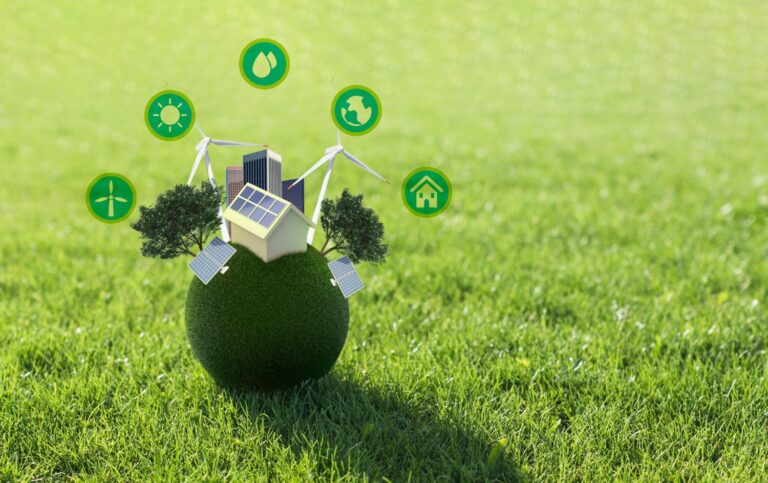Smart Thermostats: An Innovative Way to Save on Cooling Costs
Introduction to Smart Thermostats
The modern home is a hub of innovation, where technology and convenience intersect to create more efficient living spaces. Among the revolutionary technologies making waves in home management, smart thermostats are gaining widespread attention. These advanced devices offer many benefits, from improving home comfort to significantly reducing energy bills. By incorporating simple tips to lower cooling bill through effective use, smart thermostats can transform how we manage indoor climates.
What makes smart thermostats stand out is their ability to merge modern technology with everyday practicality. Unlike traditional thermostats that require manual adjustment, smart thermostats learn your preferences and schedule, adapting to your lifestyle seamlessly. This makes them an attractive option for anyone looking to save time, energy, and money, all while maintaining optimal home comfort.
How Do Smart Thermostats Work?
Smart thermostats utilize a combination of sensors, algorithms, and real-time data to manage your home’s climate more effectively than traditional thermostats. These devices can detect when you are home or away, monitor weather conditions, and adjust temperatures to maintain comfort while optimizing energy use. By connecting to your home’s Wi-Fi, smart thermostats allow for remote control via smartphone apps, making it possible to manage your home’s temperature from virtually anywhere.
One of the standout features of smart thermostats is their adaptive learning capability. They can analyze your daily routines and temperature preferences using machine learning, creating a customized heating and cooling schedule. This ensures that your home stays comfortable at all times and minimizes wasteful energy consumption when the space is unoccupied.
Benefits of Using Smart Thermostats
- Energy Efficiency:The capacity of smart thermostats to increase energy efficiency is one of their main advantages. These devices ensure energy isn’t wasted by learning your daily routines and adjusting temperatures when you’re not home. According to data from the S. Department of Energy, homes using smart thermostats can reduce their heating and cooling bills by approximately 10% annually.
- Cost Savings:The energy efficiency offered by smart thermostats directly translates to cost savings on utility bills. Although an initial investment is involved in purchasing a smart thermostat, the reduction in energy consumption means that this outlay can be recouped relatively quickly. In the long run, the continued savings contribute to a significant decrease in overall home operating costs.
- Convenience:The convenience of controlling your home’s temperature remotely cannot be overstated. Whether at work, on vacation, or simply lounging in another room, adjusting your thermostat via an app provides unmatched flexibility. This is especially helpful for people who travel a lot or have unpredictable schedules.
Features that Enhance Savings
To fully realize the potential of smart thermostats, it’s essential to understand some of their key features that contribute to cost savings:
- Geo-fencing:Geo-fencing is a feature that allows the thermostat to detect when you are approaching home and adjust the cooling settings accordingly. By using your phone’s location services, the thermostat can ensure your home is at the perfect temperature when you arrive without wasting energy while you’re away.
- Learning Algorithms:Smart thermostats have advanced learning algorithms to analyze your daily routines and temperature preferences. Over time, they create a personalized schedule that maximizes comfort while minimizing energy consumption, ensuring your home is always at the ideal temperature with minimal manual input.
- Energy Reports:Detailed energy usage reports provided by many smart thermostats offer insights into your energy consumption https://www.architecturaldigest.com/reviews/hvac/what-is-hvacpatterns. These reports can help you identify areas where you can reduce energy use and utility bills. By understanding your consumption habits, you can make informed decisions contributing to ongoing savings.
Choosing the Right Smart Thermostat
Selecting the right smart thermostat involves considering several factors, such as compatibility with your HVAC system, ease of use, and additional features. Choosing a thermostat that can seamlessly integrate with your existing home setup is crucial.
When evaluating different models, consider user interface, compatibility with smart home ecosystems (e.g., Amazon Alexa, Google Home), and customer reviews. Additionally, look for features such as voice control, multi-room sensors, and detailed energy reports to ensure you maximize your investment.
Installation Tips
While some homeowners may prefer professional installation, many smart thermostats are designed for easy DIY setup. The installation typically involves removing the old thermostat, connecting the new smart thermostat’s wiring according to the manufacturer’s instructions, and configuring the device using its app.
If you encounter any difficulties during installation, it’s advisable to consult a professional to ensure the thermostat is installed correctly and functions optimally. Proper installation is paramount to leveraging the full benefits of a smart thermostat, from energy savings to improved home comfort.
Conclusion
When it comes to home climate control, smart thermostats are a huge advancement since they provide a combination of cost savings, efficiency, and convenience that traditional thermostats just cannot equal. By understanding the features and benefits of these devices, homeowners can make informed decisions that lead to increased comfort and reduced energy bills. Embracing this technology is smart for anyone looking to optimize their home’s efficiency and cut down on cooling costs.


